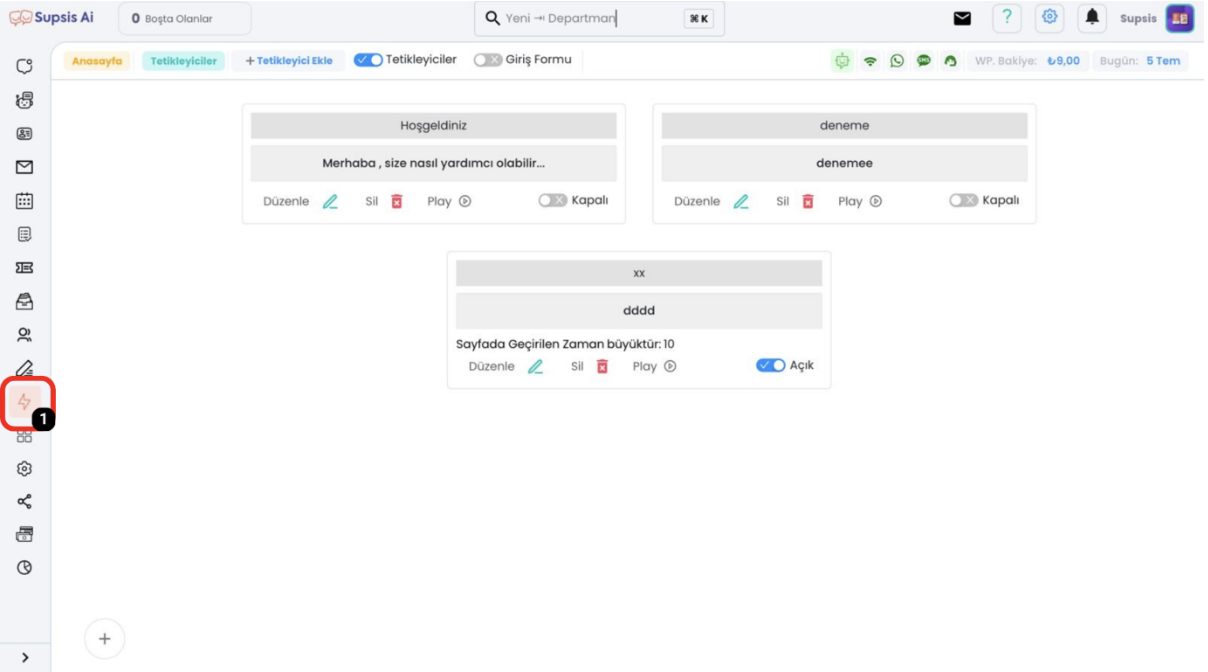What is the Trigger Module Used For?
Supsis AI's Trigger Module is a powerful tool that integrates automation systems into business processes. This tool, which optimizes customer interactions and brings an automatic breath to the workflow, acts on specific events or customer behaviors. This module, which needs a kind of trigger vector, increases efficiency while maintaining the balance of the process.

What is the Trigger Module?
Trigger Module (visual 1) is a system that automatically performs certain actions when specific conditions occur during customer interactions and operational processes. These actions include various operations such as sending messages to customers, creating support requests, and updating information.
Basic Functions of the Trigger Module
Automatic Messaging:
Trigger module automatically sends messages when certain events occur. Examples include welcoming visitors when they reach a specific page, sending reminder messages to customers who leave products in their cart, and offering return offers to users who leave the site for a certain period.
Status-Based Operations:
It enables automatic processing of customer support requests according to specific criteria. Examples of triggers include creating high-priority support requests in emergencies, automatically assigning tasks to the support team, or creating reminders for requests that are not resolved within a certain period.
Personalized Responses:
It offers personalized responses based on customer behaviors. Personalized responses include offering special offers to customers who have previously been interested in specific products, making recommendations based on customers' previous interactions, or offering customized content according to customer segmentation.
Integration:
It provides seamless integration with other Supsis AI modules and third-party software. It updates customer data by integrating with CRM systems. It starts automatic campaigns by integrating with email marketing tools. It enables automation of inventory management and order processes by integrating with ERP systems.
Easy Setup and Management:
Thanks to its user-friendly interface, you can easily create and manage triggers. It does not require coding knowledge. You can easily perform processes such as creating new trigger rules, editing and optimizing existing triggers, or monitoring and reporting trigger performance.
The module with these basic functions offers the opportunity to have an efficient business process in addition to easy use.